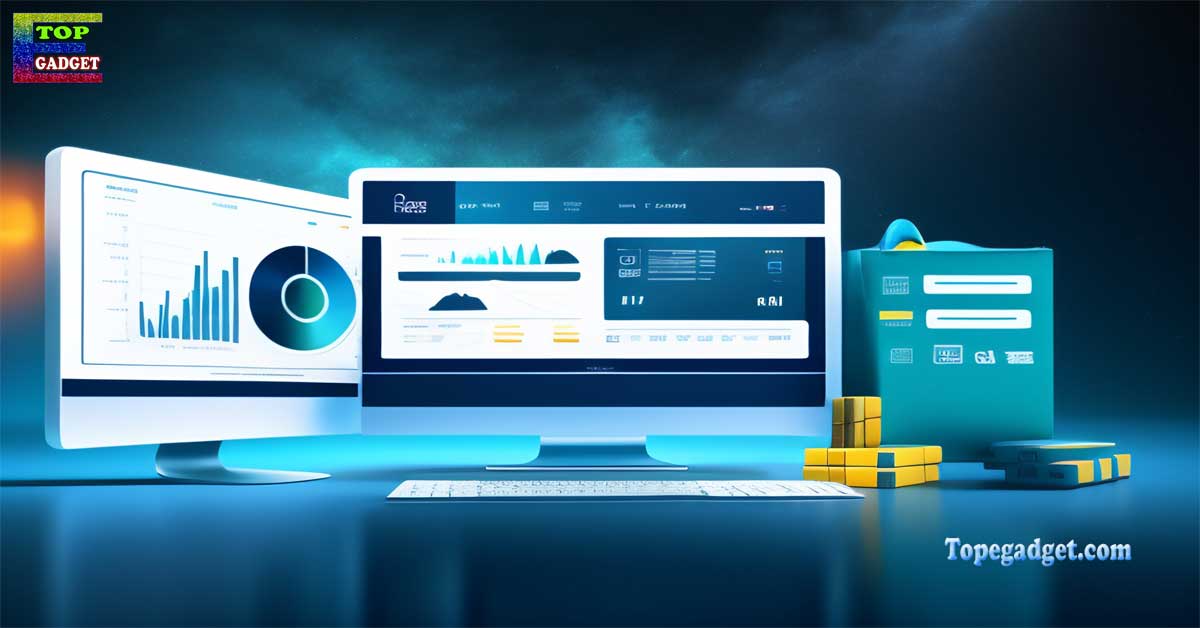In today’s fast-paced world, the field of information technology (IT) is constantly evolving. New innovations and trends emerge at a rapid pace, transforming the way we live and work. In this article, we will explore the latest information technology trends that are shaping the industry and revolutionizing various sectors. From artificial intelligence to cybersecurity, these trends are driving innovation and opening up new possibilities for businesses and individuals alike.
Table of Contents
- Introduction: The Ever-Changing Landscape of Information Technology
- Artificial Intelligence: Empowering Machines to Learn and Adapt
- Internet of Things (IoT): Connecting the Physical and Digital Worlds
- Cloud Computing: Enabling Flexible and Scalable Solutions
- Cybersecurity: Protecting Data in the Digital Age
- Big Data and Analytics: Extracting Insights from Vast Amounts of Information
- Blockchain: Enhancing Security and Transparency in Transactions
- Augmented Reality (AR) and Virtual Reality (VR): Transforming User Experiences
- Edge Computing: Processing Data Closer to the Source
- Quantum Computing: Unlocking Unprecedented Computational Power
- 5G Technology: Revolutionizing Connectivity and Communication
- Automation and Robotics: Streamlining Processes and Enhancing Efficiency
- Voice and Natural Language Processing: Enabling Seamless Human-Computer Interaction
- Biometrics: Enhancing Security and User Authentication
- Conclusion: Embracing the Power of Technology
1. Introduction: The Ever-Changing Landscape of Information Technology
Information technology has become an integral part of our lives, driving innovation and transforming industries. As technology advances, new trends emerge, reshaping the way we interact with machines and each other. In this article, we will delve into the latest trends in information technology and explore their impact on various sectors.
2. Artificial Intelligence: Empowering Machines to Learn and Adapt
Artificial Intelligence (AI) has been a game-changer in the world of technology. It involves developing machines that can perform tasks that typically require human intelligence. AI algorithms are designed to learn from data, recognize patterns, and make informed decisions. Machine learning, deep learning, and natural language processing are some of the key components of AI that are driving innovation in sectors such as healthcare, finance, and customer service.
3. Internet of Things (IoT): Connecting the Physical and Digital Worlds
The Internet of Things (IoT) refers to the network of physical devices, vehicles, appliances, and other objects embedded with sensors, software, and connectivity. These devices can collect and exchange data, creating a seamless network of interconnected systems. From smart homes to industrial automation, IoT is revolutionizing the way we interact with our surroundings and enabling greater efficiency and productivity.
4. Cloud Computing: Enabling Flexible and Scalable Solutions
Cloud computing has transformed the way businesses store, manage, and process data. It involves delivering on-demand computing resources over the internet, including storage, processing power, and software applications. Cloud computing offers scalability, flexibility, and cost-effectiveness, allowing businesses to focus on their core competencies while leaving the IT infrastructure to cloud service providers.
5. Cybersecurity: Protecting Data in the Digital Age
With the increasing reliance on technology, cybersecurity has become a top priority for individuals and businesses alike. Cyberattacks are becoming more sophisticated, and protecting sensitive data has never been more crucial. From encryption to threat intelligence, cybersecurity measures are constantly evolving to keep up with the ever-changing threat landscape.
6.Big Data and Analytics: Extracting Insights from Vast Amounts of Information
The proliferation of digital data has created a need for effective tools to analyze and derive meaningful insights from the vast amounts of information available. Big data refers to the large and complex datasets that traditional data processing applications are unable to handle. By utilizing advanced analytics techniques, businesses can uncover valuable insights, identify patterns, and make data-driven decisions.
7. Blockchain: Enhancing Security and Transparency in Transactions
Blockchain technology is revolutionizing the way transactions are conducted and recorded. It is a decentralized and distributed ledger that securely records and verifies transactions across multiple computers. Blockchain provides transparency, immutability, and enhanced security, making it an ideal solution for industries such as finance, supply chain, and healthcare.
8. Augmented Reality (AR) and Virtual Reality (VR): Transforming User Experiences
Augmented Reality (AR) and Virtual Reality (VR) are technologies that overlay virtual elements onto the real world or create entirely immersive virtual environments. These technologies have the potential to transform various industries, including gaming, entertainment, education, and training. By blending the physical and digital worlds, AR and VR offer immersive and interactive experiences.
9. Edge Computing: Processing Data Closer to the Source
Edge computing involves processing and analyzing data closer to its source rather than relying on a centralized cloud infrastructure. This approach reduces latency and improves response time, making it ideal for applications that require real-time processing, such as autonomous vehicles, industrial automation, and smart cities.
10. Quantum Computing: Unlocking Unprecedented Computational Power
Quantum computing is an emerging technology that leverages the principles of quantum mechanics to perform complex computations at an unprecedented speed. Quantum computers have the potential to solve complex problems that are currently intractable for classical computers. Industries such as pharmaceuticals, finance, and cryptography can benefit from the immense computational power offered by quantum computing.
11. 5G Technology: Revolutionizing Connectivity and Communication
The fifth generation of wireless technology, 5G, is set to revolutionize connectivity and communication. With faster speeds, lower latency, and greater capacity, 5G enables innovative applications such as autonomous vehicles, remote surgery, and smart cities. It provides a foundation for the Internet of Things (IoT) and supports the increasing demand for high-bandwidth applications.
12. Automation and Robotics: Streamlining Processes and Enhancing Efficiency
Automation and robotics are transforming industries by streamlining processes and enhancing efficiency. From manufacturing to healthcare, robots and automated systems are performing tasks with precision and accuracy. Robotic process automation (RPA) and artificial intelligence (AI) are driving advancements in automation, reducing costs, and improving productivity.
13. Voice and Natural Language Processing: Enabling Seamless Human-Computer Interaction
Voice and natural language processing technologies are enabling seamless interaction between humans and computers. Virtual assistants and chatbots can understand and respond to human speech, allowing for more natural and intuitive interfaces. These technologies have applications in customer service, healthcare, and smart home devices.
14. Biometrics: Enhancing Security and User Authentication
Biometric authentication methods, such as fingerprint recognition and facial recognition, are gaining popularity due to their enhanced security and convenience. Biometrics provide a unique and personal way to identify individuals, reducing the reliance on traditional passwords or PINs. From unlocking smartphones to accessing secure facilities, biometrics are reshaping the field of user authentication.
15. Conclusion: Embracing the Power of Technology
The latest information technology trends are shaping the future of various industries and revolutionizing the way we live and work. From artificial intelligence and IoT to cloud computing and cybersecurity, these trends offer immense opportunities for businesses and individuals alike. Embracing these technologies and staying updated with the latestdevelopments can drive innovation, improve efficiency, and create new possibilities.
Technology is evolving at an unprecedented pace, and staying ahead of the curve is essential for businesses to remain competitive. By leveraging the latest information technology trends, organizations can streamline their processes, enhance customer experiences, and gain a competitive edge in the market.
In conclusion, the dynamic field of information technology is constantly evolving, presenting new opportunities and challenges. From artificial intelligence to blockchain and 5G technology, the latest trends are reshaping industries and transforming the way we live and work. By embracing these trends and harnessing the power of technology, businesses and individuals can unlock new possibilities and thrive in the digital age.
Frequently Asked Questions (FAQs)
- What are the latest information technology trends?
The latest information technology trends include artificial intelligence, IoT, cloud computing, cybersecurity, big data and analytics, blockchain, augmented reality and virtual reality, edge computing, quantum computing, 5G technology, automation and robotics, voice and natural language processing, and biometrics.
- How do these trends impact businesses?
These trends have a significant impact on businesses by enabling innovation, improving efficiency, enhancing security, and creating new business models. They provide opportunities for process automation, data-driven decision-making, enhanced customer experiences, and improved productivity.
- Are these trends relevant to all industries?
Yes, these trends are relevant to various industries, including finance, healthcare, manufacturing, retail, transportation, and entertainment, among others. The transformative power of technology can be harnessed across sectors to drive growth and innovation.
- How can businesses stay updated with the latest trends?
Businesses can stay updated with the latest trends by actively monitoring industry publications, attending conferences and seminars, engaging in professional networks, and collaborating with technology partners. It is crucial to foster a culture of continuous learning and adaptability to embrace emerging technologies.
- How can individuals benefit from these trends?
Individuals can benefit from these trends by acquiring new skills and knowledge in areas such as data analytics, cybersecurity, artificial intelligence, and blockchain. Embracing these technologies can lead to career opportunities, personal development, and enhanced digital literacy.





